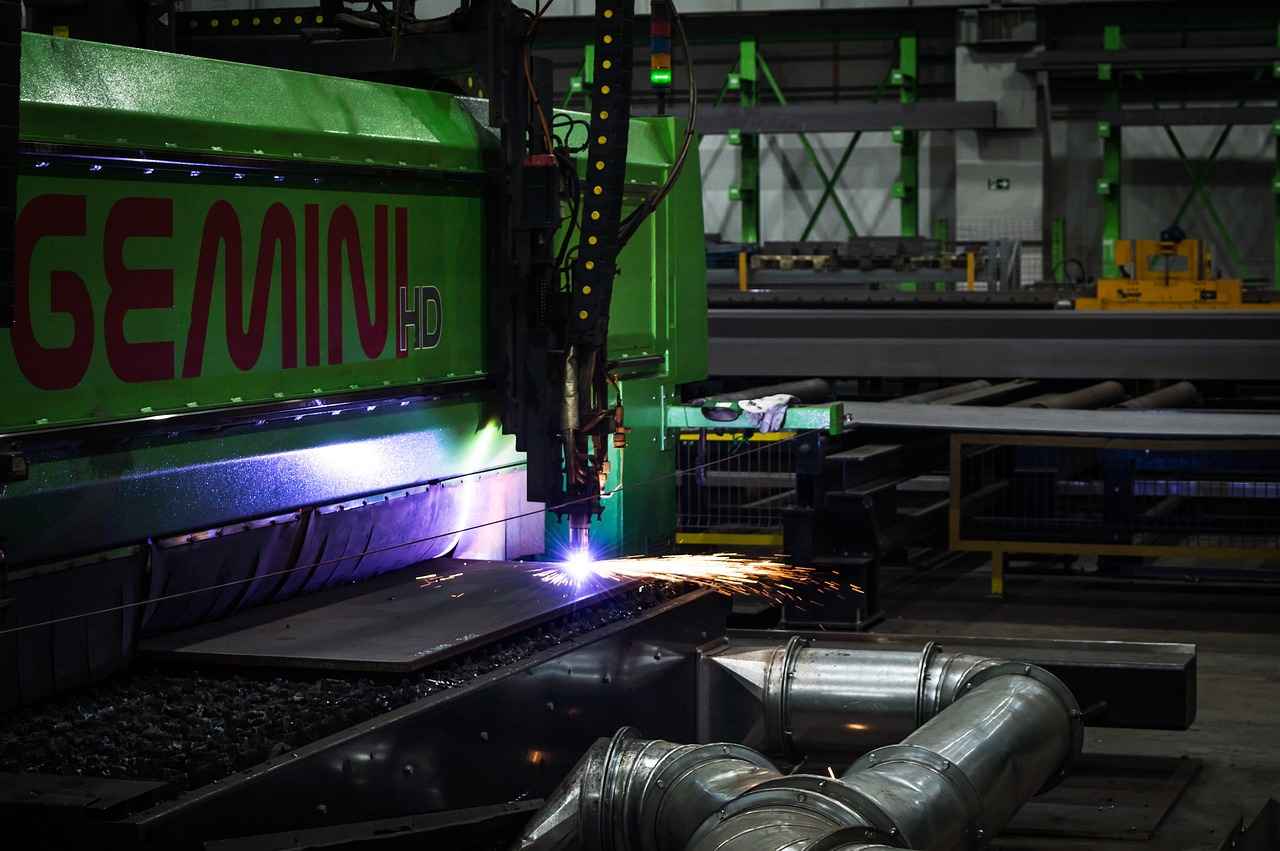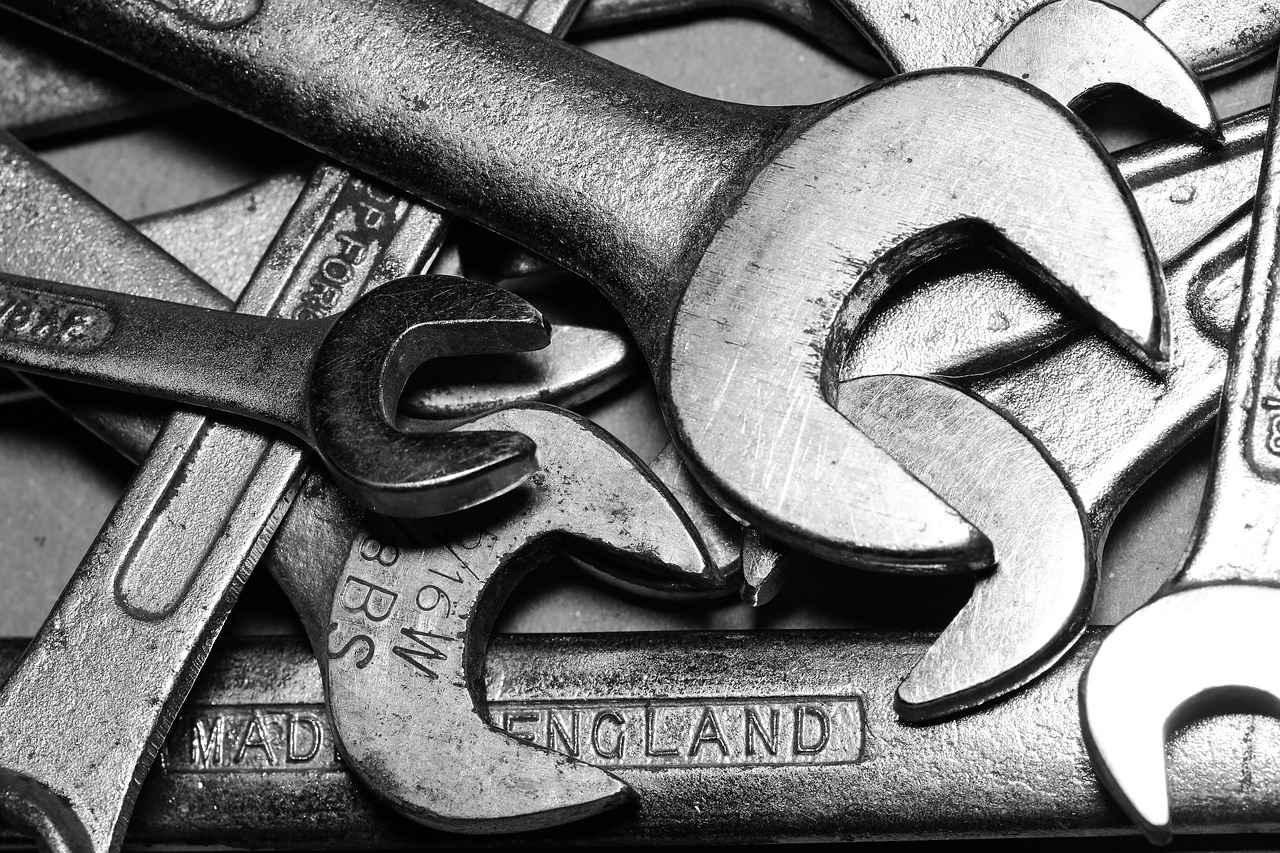The Honda Accord is a symbol of reliability and innovation in the automotive industry. With a rich history that dates back to its introduction in 1976, this vehicle has evolved significantly over the decades. Today, the Honda Accord is manufactured in various locations around the globe, each contributing uniquely to its production and overall quality. In this article, we will explore the origins and manufacturing locations of Honda Accords, uncovering the global footprint of this popular vehicle and its impact on local economies.
The production of Honda Accords occurs in several key locations worldwide, primarily in the United States and Japan, along with other countries like China and Thailand. Each of these locations plays a vital role in the vehicle’s assembly and distribution.
The United States is home to multiple Honda manufacturing plants, including those in Ohio and Alabama. These facilities are strategically located to efficiently meet the demands of the North American market. The presence of Honda manufacturing plants in the U.S. not only supports local economies but also provides thousands of jobs, fostering economic growth in these regions.
Honda’s commitment to quality is evident in its adherence to rigorous manufacturing standards in the U.S. This ensures that the Accords produced here maintain a high level of reliability and performance. The integration of advanced technology and skilled labor further enhances the quality of these vehicles.
Japan remains a cornerstone of Honda Accord production, known for its sophisticated technology and highly skilled workforce. The engineering excellence found in Japan is pivotal in developing innovative features that set the Honda Accord apart from its competitors.
The engineering prowess in Japan significantly impacts the design and functionality of Honda Accords. With a focus on efficiency and sustainability, Japanese engineers continuously push the boundaries of automotive technology, ensuring that each new model meets the highest standards of performance and safety.
Honda operates several key manufacturing facilities in Japan, including the Suzuka and Sayama plants. These facilities are renowned for their advanced production techniques and high efficiency, contributing significantly to the overall output of Honda Accords.
In addition to the U.S. and Japan, Honda has expanded its manufacturing footprint to include sites in China and Thailand. This global presence allows Honda to cater to diverse markets and meet the growing demand for Accords in different regions.
China’s manufacturing capabilities enable Honda to efficiently produce vehicles that meet the rising demand for Accords in the Asian market. This strategic positioning helps balance supply and demand, ensuring that Honda remains competitive in a rapidly evolving market.
Thailand’s strategic location and favorable trade agreements make it an attractive site for Honda’s production. The country’s robust infrastructure and skilled labor force contribute to efficient manufacturing processes, benefiting both Honda and the local economy.
Trade policies significantly influence Honda’s manufacturing decisions, affecting where and how many vehicles are produced. Understanding these policies is essential for consumers and stakeholders alike, as they can impact the availability and pricing of Honda Accords.
Consumers should be aware of various tariffs imposed on imported vehicles, as these can lead to price fluctuations for Honda Accords, especially those manufactured outside the U.S. Staying informed about these tariffs can help consumers make better purchasing decisions.
Local regulations regarding labor, environmental standards, and trade can significantly impact Honda’s manufacturing strategies. These regulations influence where vehicles are built and how they are marketed, ultimately shaping the company’s operational framework.

What Are the Key Manufacturing Locations for Honda Accords?
The Honda Accord is one of the most popular and reliable vehicles in the automotive market. Understanding where these vehicles are manufactured provides insight into the quality and innovation behind them. Honda has strategically established manufacturing plants across the globe, ensuring that they meet the demands of various markets while contributing to local economies.
Honda Accords are produced in several key locations worldwide, primarily in the United States, Japan, and other countries such as China and Thailand. Each of these locations plays a vital role in the vehicle’s production, utilizing local resources and labor to optimize efficiency.
- United States: The U.S. is home to multiple Honda manufacturing plants, with significant facilities located in Ohio and Alabama. These plants not only cater to the North American market but also create thousands of jobs, boosting the local economy.
- Japan: As the birthplace of Honda, Japan remains crucial in the production of Accords. The country is known for its advanced engineering and technology, which translates into high-quality vehicles.
- China: Honda’s manufacturing capabilities in China allow the company to meet the growing demand for Accords in the Asian market, balancing supply and demand effectively.
- Thailand: Thailand’s strategic location and favorable trade agreements make it an attractive site for Honda’s production, benefiting both the company and the local economy.
The United States hosts several Honda manufacturing plants, which significantly contribute to the local economy while catering to the North American market’s demand for Honda Accords. The plants in Ohio and Alabama are equipped with state-of-the-art technology, ensuring that each vehicle meets Honda’s strict quality standards.
Honda’s manufacturing facilities are primarily located in Ohio and Alabama. These states are strategically positioned to optimize logistics and distribution across the United States, allowing for efficient transportation of vehicles to dealerships nationwide.
The rigorous manufacturing standards in the U.S. ensure that Honda Accords built here maintain high quality. The combination of skilled labor and advanced manufacturing techniques contributes to the overall reliability and reputation of the Honda brand.
Japan remains a crucial player in the production of Honda Accords. The country is known for its sophisticated technology and skilled labor, which contribute to the design and assembly of these vehicles. Honda’s Japanese plants are often the first to implement new technologies and innovations, setting the standard for global production.
Honda operates several plants in Japan, including the Suzuka and Sayama factories. These facilities are renowned for their advanced production techniques and high efficiency. They play a significant role in producing models that are exported worldwide.
In addition to the U.S. and Japan, Honda has established manufacturing sites in countries like China and Thailand. These international locations help expand Honda’s global reach and production capabilities.
China’s manufacturing capabilities allow Honda to meet the growing demand for Accords in the Asian market. The ability to produce vehicles locally helps Honda balance supply and demand effectively, ensuring that they can respond quickly to market changes.
Thailand’s strategic location and favorable trade agreements make it an attractive site for Honda’s production. The country’s infrastructure supports efficient logistics, while its skilled workforce contributes to the quality of the vehicles produced.
Trade policies significantly influence Honda’s manufacturing decisions. Tariffs and regulations can affect where and how many vehicles are produced in various countries, impacting pricing and availability for consumers.
Understanding the tariffs on imported vehicles can help consumers gauge potential price fluctuations for Honda Accords, especially those manufactured overseas. This knowledge can be crucial for informed purchasing decisions.
Local regulations regarding labor, environmental standards, and trade can impact Honda’s manufacturing strategies. These regulations influence where vehicles are built and how they are marketed, shaping Honda’s approach to production worldwide.

Why Is the USA a Major Production Hub for Honda?
The United States plays a pivotal role in Honda’s global manufacturing strategy, particularly for the popular Honda Accord. This vehicle, known for its reliability and performance, is produced in several Honda plants across the country. Understanding why the USA is a major production hub for Honda reveals the intricate relationship between automotive manufacturing and local economies.
Honda has established multiple manufacturing facilities in the United States, primarily located in Ohio and Alabama. These states were chosen for their strategic advantages, including proximity to major transportation networks and a skilled workforce. The presence of these plants not only meets the demand for Honda Accords in North America but also supports local jobs and economic growth.
The economic impact of Honda’s manufacturing operations is substantial. The plants in Ohio and Alabama employ thousands of workers, providing stable jobs and contributing to the local economy. In addition to direct employment, these facilities also create opportunities for local suppliers and service providers, fostering a robust network of businesses that support Honda’s operations.
- Quality Assurance: The rigorous manufacturing standards in the USA ensure that Honda Accords produced here meet high-quality benchmarks, contributing to the brand’s reputation for reliability.
- Logistical Efficiency: Being situated in the heart of the country allows for efficient distribution of vehicles across North America, reducing shipping times and costs.
- Market Responsiveness: Local production enables Honda to respond quickly to changes in consumer demand and preferences, ensuring that the company remains competitive in a dynamic market.
Honda’s manufacturing facilities in the USA are equipped with advanced technology and automation systems that enhance production efficiency. These innovations not only streamline the manufacturing process but also improve the overall quality of the vehicles. The integration of technology allows Honda to implement just-in-time production methods, reducing waste and optimizing inventory management.
Honda is dedicated to sustainable manufacturing practices, and its U.S. plants are no exception. The company has implemented initiatives to minimize environmental impact, such as reducing energy consumption and waste. By prioritizing sustainability, Honda not only contributes to a healthier planet but also appeals to environmentally conscious consumers.
As Honda continues to adapt to evolving market trends, future developments in U.S. manufacturing are likely to focus on electric vehicles (EVs) and hybrid technology. With the growing demand for eco-friendly transportation options, Honda’s investment in research and development in the USA will play a crucial role in shaping the future of the Accord and other models.
In summary, the United States serves as a vital production hub for Honda, particularly for the Honda Accord. The combination of skilled labor, advanced technology, and a commitment to sustainability ensures that Honda’s manufacturing operations in the USA will continue to thrive, benefiting both the company and the local economies in which it operates.
Which States Host Honda Accord Manufacturing Plants?
The Honda Accord is one of the most recognized vehicles in the automotive industry, celebrated for its reliability, performance, and innovative features. To understand the production of this iconic car, it is essential to explore the key manufacturing locations, particularly in the United States. This article delves into the states that host Honda Accord manufacturing plants and the significance of these facilities.
Honda’s manufacturing facilities are primarily located in Ohio and Alabama. These states have been strategically chosen to optimize logistics and distribution across the United States, ensuring that Honda can efficiently meet the demands of the North American market.
In Ohio, the Marysville Auto Plant plays a pivotal role in the production of the Honda Accord. This facility has been operational since 1982 and is renowned for its commitment to quality and efficiency. The plant employs thousands of workers and utilizes advanced manufacturing techniques to produce high-quality vehicles. Additionally, the Marysville plant is known for its environmentally friendly practices, including recycling initiatives and energy-efficient processes.
Meanwhile, in Alabama, the Lincoln Plant contributes significantly to Honda’s production capabilities. Opened in 2001, this facility specializes in the assembly of various Honda models, including the Accord. The Lincoln plant has a strong focus on innovation and technology, incorporating state-of-the-art equipment to enhance production efficiency. This facility also emphasizes workforce development, providing training programs to ensure that employees are equipped with the necessary skills to excel in their roles.
Both Ohio and Alabama not only host Honda manufacturing plants but also serve as vital economic engines for their respective communities. The presence of these plants has led to job creation and has stimulated local economies through various support industries, including parts suppliers and logistics companies. The ripple effect of Honda’s manufacturing operations extends beyond the immediate vicinity of the plants, contributing to the overall economic growth of the regions.
The rigorous manufacturing standards in the U.S. ensure that Honda Accords built in these states maintain a high level of quality. Honda’s commitment to excellence is evident in its production processes, which adhere to strict safety and environmental regulations. These standards not only enhance the reliability of the vehicles but also bolster the brand’s reputation among consumers.
While the U.S. plays a significant role in Honda Accord manufacturing, Japan remains a crucial player in the production process. The advanced engineering and innovative technology developed in Japan set a benchmark for quality and performance. Honda’s facilities in Japan, such as the Suzuka and Sayama plants, are known for their efficiency and cutting-edge production techniques.
In addition to the U.S. and Japan, Honda has established manufacturing sites in countries like China and Thailand. These international facilities not only expand Honda’s global reach but also allow the company to cater to diverse market demands. For instance, production in China helps meet the growing demand for Honda Accords in the Asian market, while Thailand’s strategic location and favorable trade agreements enhance Honda’s manufacturing capabilities.
In summary, Honda’s manufacturing plants in Ohio and Alabama are integral to the production of the Accord, significantly impacting local economies while maintaining high standards of quality. The collaboration between U.S. facilities and those in Japan and other countries ensures that Honda remains a leader in the automotive industry.
How Do U.S. Manufacturing Standards Impact Quality?
The manufacturing standards in the United States are renowned for their rigor and precision. When it comes to the production of Honda Accords, these standards play a crucial role in ensuring that each vehicle meets high benchmarks for quality and reliability. This commitment to excellence not only enhances the driving experience but also solidifies Honda’s reputation as a leading automotive brand.
U.S. manufacturing standards are a set of regulations and practices designed to ensure the safety, quality, and efficiency of products produced within the country. These standards cover various aspects, including:
- Material Quality: Ensuring that all materials used in manufacturing meet strict safety and durability criteria.
- Workplace Safety: Implementing rigorous safety protocols to protect workers and ensure a safe manufacturing environment.
- Environmental Regulations: Adhering to laws that minimize environmental impact, promoting sustainability in manufacturing processes.
The Honda Accord, a staple in the midsize sedan market, benefits significantly from these stringent manufacturing standards. Here’s how:
- Enhanced Quality Control: U.S. plants employ advanced quality control measures, including regular inspections and testing, to identify and rectify any potential issues during the manufacturing process.
- Consistency in Production: Strict adherence to standards ensures that every Honda Accord produced in the U.S. maintains a consistent level of quality, contributing to customer satisfaction and brand loyalty.
- Innovation and Technology: U.S. manufacturing facilities often incorporate the latest technology and automation, which further enhances the quality and reliability of the vehicles.
Reliability is a key factor that influences consumer purchasing decisions. Honda Accords are often recognized for their longevity and dependability, which can be attributed to the high manufacturing standards upheld in the U.S. According to various consumer reports, vehicles that demonstrate consistent reliability tend to retain their value better over time.
While Honda operates manufacturing plants in several countries, the U.S. facilities are often viewed as the benchmark for quality. For instance, Japanese manufacturing practices also emphasize quality but may differ in certain production techniques. The combination of U.S. standards and Japanese engineering results in a vehicle that is not only reliable but also innovative.
The skilled workforce in U.S. Honda plants is instrumental in maintaining these high standards. Workers undergo extensive training to ensure they are well-versed in quality control processes and the latest manufacturing technologies. This expertise allows for a more efficient production line and significantly reduces the likelihood of defects.
Despite the high standards, challenges remain. Fluctuations in the supply chain, changes in regulations, and economic factors can impact production quality. Honda continuously invests in training programs and technology upgrades to address these challenges and maintain the integrity of the manufacturing process.
In conclusion, the rigorous manufacturing standards in the U.S. not only ensure that Honda Accords are built to last but also enhance the overall reputation of the brand. By prioritizing quality, safety, and innovation, Honda remains a leader in the automotive industry, providing consumers with vehicles they can trust.

What Role Does Japan Play in Honda Accord Production?
Japan plays a pivotal role in the production of Honda Accords, ensuring that these vehicles embody the brand’s commitment to quality, innovation, and performance. As a country renowned for its engineering excellence, Japan’s contribution to the Honda Accord is significant, with a focus on both design and assembly processes.
The engineering expertise found in Japan is one of the cornerstones of Honda’s manufacturing success. Advanced technology and meticulous attention to detail are hallmarks of Japanese automotive engineering. This influence is evident in the innovative features integrated into Honda Accords, such as fuel-efficient engines, cutting-edge safety systems, and user-friendly infotainment options. The emphasis on quality assurance and continuous improvement, known as Kaizen, ensures that every Accord produced meets the highest standards.
Honda operates several state-of-the-art manufacturing plants in Japan, with the Suzuka and Sayama factories being particularly notable. These facilities are equipped with the latest production technologies and are renowned for their efficiency and quality control processes. The Suzuka plant, for instance, is designed to optimize the assembly line, allowing for rapid production without compromising quality. Meanwhile, the Sayama plant is celebrated for its environmentally friendly practices, showcasing Honda’s commitment to sustainability.
One of the key factors contributing to the success of Honda Accords produced in Japan is the availability of skilled labor. Workers in Japanese manufacturing are often highly trained and possess a deep understanding of their craft. This expertise translates into superior craftsmanship and attention to detail, which are critical in the automotive industry. The collaboration between skilled labor and advanced technology results in vehicles that are not only reliable but also innovative.
Japan has been the birthplace of numerous innovations that have been incorporated into the Honda Accord. For example, the introduction of hybrid technology in the Accord was a significant milestone, allowing for enhanced fuel efficiency and reduced emissions. Additionally, features such as adaptive cruise control and lane-keeping assistance were developed through rigorous research and testing in Japan, further solidifying Honda’s reputation for safety and performance.
Japan’s role in Honda Accord production also has broader implications for global supply chains. The country serves as a critical hub for research and development, ensuring that new technologies and designs are effectively integrated into the manufacturing process. As Honda expands its production capabilities in other countries, the innovations and standards established in Japan continue to influence global operations. This interconnectedness helps maintain a consistent level of quality across all Honda vehicles, regardless of where they are produced.
Looking ahead, the future of Honda Accord production in Japan appears promising. With ongoing investments in technology and sustainability, Honda aims to enhance its manufacturing processes further. The focus on electric vehicles and alternative energy sources will likely shape the next generation of Honda Accords, with Japan leading the charge in developing these advancements. As consumer preferences shift towards more eco-friendly options, Honda’s commitment to innovation in Japan will play a crucial role in meeting these demands.
How Does Japanese Engineering Influence Honda Accords?
The Honda Accord is a symbol of excellence in the automotive industry, and a large part of its success can be attributed to the advanced engineering practices found in Japan. This article delves into how Japanese engineering influences the design, performance, and reliability of Honda Accords, making them a benchmark in the mid-size sedan category.
Japanese engineering is renowned for its precision, innovation, and attention to detail. These qualities are deeply embedded in the culture of Japanese manufacturers, where the pursuit of perfection is a guiding principle. Honda, as one of the leading automakers, harnesses these values to create vehicles that not only meet but exceed customer expectations.
Honda Accords are equipped with some of the latest technologies that enhance both safety and performance. For instance, the Honda Sensing suite is a collection of safety features designed to assist drivers and prevent accidents. This system includes adaptive cruise control, lane-keeping assist, and collision mitigation braking. Such innovations stem from rigorous research and development conducted in Japan, where engineers continually strive to improve vehicle safety and efficiency.
Quality control is a cornerstone of Japanese manufacturing philosophy. Honda employs stringent quality assurance processes at its facilities, particularly in Japan. Every vehicle undergoes a series of tests and inspections to ensure that it meets the high standards expected by consumers. This meticulous attention to quality contributes to the reliability and longevity of Honda Accords, making them a preferred choice among car buyers.
The performance of Honda Accords is significantly influenced by the advanced engineering techniques employed in their design and manufacturing. For example, the use of lightweight materials and aerodynamic designs helps improve fuel efficiency without compromising power. The Earth Dreams Technology employed in Honda engines is a testament to this effort, combining performance with environmental responsibility.
Japan boasts a highly skilled workforce, particularly in the engineering and manufacturing sectors. The expertise of Japanese engineers and technicians ensures that every aspect of the Honda Accord, from the engine to the interior finishes, is crafted to perfection. This skilled labor force is essential in maintaining Honda’s reputation for building high-quality, reliable vehicles.
The concept of Kaizen, or continuous improvement, is deeply ingrained in Honda’s operational philosophy. This approach encourages employees at all levels to identify areas for improvement and innovate processes. As a result, Honda Accords benefit from ongoing enhancements in design, technology, and manufacturing efficiency, keeping them competitive in a rapidly evolving automotive market.
Honda’s commitment to quality engineering has established a strong global presence for the Accord. As a result, the vehicle is not only popular in Japan but also enjoys significant demand in markets like North America and Europe. The reputation for reliability and performance cultivated through Japanese engineering practices has made the Accord a trusted choice for consumers worldwide.
In conclusion, the influence of Japanese engineering on Honda Accords is profound and multifaceted. From innovative technologies and rigorous quality control to the skilled labor force and commitment to continuous improvement, these elements combine to create a vehicle that is not only well-engineered but also beloved by drivers around the world.
What Are the Key Facilities in Japan for Accord Manufacturing?
The manufacturing of Honda Accords is a testament to the company’s commitment to quality and innovation. Among the various facilities that contribute to this iconic vehicle’s production, Japan plays a pivotal role. The country is home to several state-of-the-art factories, where advanced technologies and skilled labor converge to create vehicles that meet global standards.
Honda operates multiple manufacturing plants in Japan, with the Suzuka and Sayama factories being particularly noteworthy. These facilities are not only integral to the production of the Honda Accord but also serve as benchmarks for manufacturing excellence.
- Suzuka Factory: Located in Mie Prefecture, the Suzuka plant is renowned for its advanced production techniques. This facility employs cutting-edge robotics and automation to enhance efficiency while maintaining strict quality control standards. The factory plays a vital role in the assembly of various Honda models, including the Accord, and is known for its ability to adapt quickly to changing market demands.
- Sayama Factory: Situated in Saitama Prefecture, the Sayama plant is another key player in Honda’s manufacturing network. This facility is celebrated for its high efficiency and environmentally friendly practices. Sayama is equipped with innovative technologies that reduce waste and energy consumption, aligning with Honda’s commitment to sustainability. The factory’s skilled workforce is adept at producing high-quality vehicles that meet rigorous safety and performance standards.
Both factories exemplify Honda’s philosophy of continuous improvement and innovation. They are designed to foster collaboration among engineers, designers, and production teams, ensuring that each Accord produced reflects the brand’s dedication to excellence.
The significance of Honda’s Japanese manufacturing facilities extends beyond domestic production. They serve as crucial hubs for the global supply chain, providing components and vehicles that cater to various international markets. The integration of advanced manufacturing technologies in these plants allows Honda to maintain a competitive edge and respond swiftly to consumer preferences worldwide.
Moreover, the expertise cultivated in Japan influences Honda’s production strategies in other countries. The principles of lean manufacturing, which emphasize efficiency and waste reduction, are implemented across Honda’s global operations, ensuring that the quality of the Accord remains consistent, regardless of where it is produced.
Japanese engineering is synonymous with precision and reliability. The engineering teams at the Suzuka and Sayama factories are instrumental in developing innovative features that enhance the performance and safety of the Honda Accord. Their rigorous testing and quality assurance processes ensure that every vehicle meets Honda’s high standards before it reaches the consumer.
These facilities also play a vital role in research and development, where new technologies and designs are tested and refined. This continuous investment in innovation helps Honda stay at the forefront of the automotive industry and reinforces the Accord’s reputation as a leader in its class.
Innovation is a hallmark of Honda’s approach to manufacturing. At the Suzuka and Sayama factories, engineers are constantly exploring new technologies that can be integrated into the Accord. From advancements in hybrid technology to improvements in safety features, these facilities are at the cutting edge of automotive development.
Furthermore, Honda’s commitment to sustainability is evident in its Japanese operations. Efforts to reduce carbon emissions and enhance fuel efficiency are central to the manufacturing process, aligning with global trends toward greener automotive solutions.
In summary, Honda’s key facilities in Japan, particularly the Suzuka and Sayama factories, are vital to the production of the Honda Accord. Their advanced technologies, skilled workforce, and commitment to quality and sustainability position Honda as a leader in the automotive industry, ensuring that the Accord remains a preferred choice for consumers worldwide.

Are There Other International Manufacturing Sites for Honda Accords?
The Honda Accord is not just a symbol of reliability and innovation; it also showcases Honda’s extensive global manufacturing network. Beyond the well-known production facilities in the United States and Japan, Honda has strategically expanded its operations to various countries, enhancing its ability to meet the demands of an increasingly global market.
Honda has established significant manufacturing sites in China and Thailand, among other countries. These locations play a crucial role in the overall production strategy of the Honda Accord, allowing the company to cater to diverse markets while optimizing costs.
China stands as one of Honda’s largest markets and manufacturing hubs. The country’s advanced manufacturing capabilities allow Honda to produce vehicles at a lower cost while maintaining quality. The joint ventures Honda has established with local firms facilitate not only production but also the adaptation of the Accord to meet local consumer preferences.
Thailand has emerged as a significant player in Honda’s manufacturing strategy due to its strategic location in Southeast Asia and favorable trade agreements. The country provides Honda with access to a growing market, while its established automotive industry infrastructure supports efficient production. Additionally, the Thai government offers incentives for foreign manufacturers, enhancing Honda’s investment in the region.
Honda’s manufacturing facilities in China and Thailand contribute significantly to the local economies. They create thousands of jobs, from assembly line workers to management positions, stimulating economic growth in these regions. Moreover, local suppliers benefit from Honda’s presence, as the company often sources parts and materials from nearby businesses, fostering a robust supply chain.
In both China and Thailand, Honda employs advanced manufacturing technologies that enhance efficiency and quality. Automation and robotics are integrated into the production process, ensuring precision and reducing labor costs. This technological investment not only boosts productivity but also aligns with Honda’s commitment to sustainability by minimizing waste and energy consumption.
The diverse manufacturing locations enable Honda to manage production costs effectively, which can influence the pricing of the Accord in various markets. By producing vehicles closer to the end consumers, Honda can reduce shipping costs and tariffs, ultimately leading to more competitive pricing. Understanding these factors can help consumers make informed decisions when purchasing a Honda Accord.
While expanding its international footprint, Honda must navigate various challenges, including trade policies, fluctuating tariffs, and local regulations. Changes in trade agreements can impact the cost of imported parts and finished vehicles, affecting pricing strategies. Additionally, local labor laws and environmental regulations can influence operational decisions, requiring Honda to adapt its practices accordingly.
Despite the geographical diversity of its manufacturing sites, Honda maintains stringent quality control standards. The company implements uniform production processes and rigorous testing protocols to ensure that every Accord, regardless of where it is built, meets the high standards expected by consumers. This commitment to quality is a cornerstone of Honda’s reputation and helps maintain customer loyalty.
In summary, Honda’s international manufacturing sites in China, Thailand, and beyond play an essential role in the production of the Honda Accord. By leveraging local advantages, investing in technology, and maintaining strict quality standards, Honda continues to thrive in a competitive global automotive market.
How Does Production in China Affect the Global Market?
The global automotive industry is continuously evolving, with manufacturers adapting to meet the demands of various markets. One significant player in this landscape is Honda, particularly regarding its production of the Accord. In recent years, China’s manufacturing capabilities have emerged as a crucial factor in Honda’s strategy to meet the growing demand for Accords in the Asian market. This article delves into how production in China influences the global market for Honda Accords.
China’s robust manufacturing infrastructure enables Honda to produce vehicles at a scale that aligns with the increasing consumer demand in Asia. The nation boasts advanced production facilities equipped with state-of-the-art technology, allowing for efficient assembly processes. Furthermore, the availability of a skilled labor force contributes significantly to the quality and efficiency of production. Honda’s investment in Chinese manufacturing not only supports local economies but also strengthens its competitive position in the market.
With the rising popularity of the Honda Accord in Asia, particularly in countries like China and India, the company has strategically positioned its manufacturing operations to ensure a steady supply. By producing Accords closer to these key markets, Honda minimizes transportation costs and reduces lead times. This localized production approach allows the company to respond swiftly to fluctuations in demand, effectively balancing supply and demand.
- Job Creation: Honda’s manufacturing plants in China have created thousands of jobs, contributing to the local economy.
- Technological Advancements: The collaboration between Honda and local suppliers fosters innovation and technological development.
- Export Opportunities: Increased production capacity enables Honda to export Accords to other regions, enhancing its global footprint.
Despite the challenges of operating in a foreign market, Honda maintains stringent quality control standards across all its manufacturing sites, including those in China. The company implements rigorous testing and quality assurance processes to ensure that every Accord meets its high standards. By leveraging advanced manufacturing techniques and continuous improvement practices, Honda ensures that the vehicles produced in China are on par with those made in other regions.
Understanding local consumer preferences is vital for Honda’s success in the Asian market. The company conducts extensive market research to tailor its production strategies to meet the specific needs of Asian consumers. This localized approach not only enhances customer satisfaction but also drives sales growth, further solidifying Honda’s position in the competitive automotive landscape.
Trade policies significantly impact Honda’s operational decisions in China. Favorable trade agreements facilitate smoother import and export processes, allowing Honda to optimize its supply chain. Conversely, any changes in tariffs or trade regulations could necessitate adjustments in Honda’s manufacturing strategy, influencing where and how many vehicles are produced.
As the automotive industry shifts towards electrification and sustainability, Honda is likely to adapt its production strategies in China accordingly. The rise of electric vehicles (EVs) presents both challenges and opportunities for Honda. By investing in EV technology and production capabilities in China, Honda can position itself to meet the evolving demands of the market while contributing to environmental sustainability.
In summary, China’s manufacturing capabilities play a pivotal role in Honda’s ability to meet the growing demand for Accords in the Asian market. By balancing supply and demand effectively, leveraging local market knowledge, and ensuring high-quality production standards, Honda is well-positioned to thrive in the competitive automotive landscape.
What Advantages Does Thailand Offer for Honda Manufacturing?
Honda has established a significant presence in Thailand, leveraging the country’s unique advantages to enhance its manufacturing capabilities. This strategic decision not only benefits Honda but also plays a critical role in bolstering the local economy.
Thailand’s geographical position in Southeast Asia provides Honda with easy access to key markets across the region. The country’s well-developed infrastructure, including extensive road networks and ports, facilitates efficient logistics and distribution of vehicles. This strategic location allows Honda to respond swiftly to market demands, ensuring timely delivery of products to customers.
Thailand has entered into numerous trade agreements, such as the ASEAN Free Trade Area (AFTA) and agreements with countries like Japan and Australia. These agreements significantly reduce tariffs on imported automotive parts and finished vehicles, which helps Honda minimize production costs. By taking advantage of these favorable trade conditions, Honda can maintain competitive pricing while enhancing its profit margins.
The establishment of Honda manufacturing plants in Thailand has created thousands of jobs, contributing to local economic growth. As Honda expands its operations, it invests in the workforce by providing training and development programs. This not only enhances the skill set of local employees but also fosters a sense of community and loyalty among workers. As a result, Honda benefits from a dedicated and skilled labor force, which is crucial for maintaining high production standards.
The Thai government actively supports the automotive industry through various incentives, including tax breaks and investment grants. These measures encourage foreign companies like Honda to establish and expand their operations in Thailand. The government’s commitment to developing the automotive sector aligns with Honda’s goals, creating a mutually beneficial partnership that drives innovation and growth.
Honda is committed to sustainability and has implemented several eco-friendly initiatives in its Thai manufacturing plants. The company focuses on reducing waste, conserving energy, and utilizing renewable resources. By adopting sustainable practices, Honda not only meets environmental standards but also enhances its corporate social responsibility profile. This commitment to sustainability resonates well with consumers, further strengthening Honda’s brand image in the region.
Looking ahead, Honda’s investment in Thailand is expected to grow, with plans for expanding production capabilities and introducing new models tailored to the Asian market. As the demand for environmentally friendly vehicles increases, Honda is likely to focus on developing hybrid and electric models in Thailand. This strategic shift will position Honda as a leader in the evolving automotive landscape while continuing to support the local economy through job creation and technological advancement.
In summary, Thailand offers Honda a multitude of advantages, from its strategic location and favorable trade agreements to the support of the local government and the commitment to sustainable practices. These factors not only enhance Honda’s production efficiency but also contribute to the overall growth of the Thai economy, making it a key player in the global automotive industry.

How Do Trade Policies Impact Honda Accord Manufacturing?
Trade policies play a critical role in shaping the manufacturing landscape for global automotive companies, including Honda. These policies dictate not only where vehicles are produced but also how many units are manufactured in various regions. As Honda continues to expand its production capabilities, understanding the impact of trade policies is essential for stakeholders, consumers, and the economy at large.
Tariffs imposed on imported vehicles and parts can significantly elevate production costs for Honda. When the government raises tariffs on materials sourced from abroad, it forces manufacturers to either absorb these costs or pass them on to consumers. This can lead to increased prices for Honda Accords, affecting sales and market competitiveness.
Free trade agreements (FTAs) can enhance Honda’s manufacturing efficiency by reducing tariffs and trade barriers. For instance, agreements between the U.S. and countries like Japan and South Korea allow Honda to source components more affordably, which can lower production costs. This strategic advantage enables Honda to maintain competitive pricing for the Accord in various markets.
Local regulations, including labor laws, environmental policies, and safety standards, also play a vital role in Honda’s manufacturing strategies. In regions with stringent regulations, Honda may face higher operational costs, leading to a reevaluation of production locations. For example, a factory in a region with favorable labor laws and environmental regulations may be prioritized over others, ensuring compliance while maintaining profitability.
Trade policies can directly impact employment levels at Honda manufacturing plants. When tariffs increase, resulting in reduced production, companies may need to downsize their workforce. Conversely, favorable trade conditions can lead to expansion and hiring, benefiting local economies. This dynamic creates a ripple effect, influencing not just Honda employees but also suppliers and service providers in the region.
Currency exchange rates can significantly affect Honda’s manufacturing costs. A stronger U.S. dollar can make American-made vehicles more expensive for foreign buyers, potentially reducing demand. In contrast, a weaker dollar may incentivize exports, prompting Honda to increase production in the U.S. to meet the growing international demand.
Trade policies are often intertwined with global supply chain dynamics. Disruptions due to geopolitical tensions, natural disasters, or pandemics can impact the availability of essential components. For instance, if trade policies lead to increased tariffs on imported parts, Honda may need to source materials locally, which could affect production timelines and costs.
As global trade continues to evolve, Honda must stay vigilant regarding emerging trends in trade policies. Potential shifts towards protectionism or new trade agreements can create both challenges and opportunities. By adapting to these changes, Honda can strategically position itself in the global market, ensuring the Accord remains a competitive choice for consumers.
In summary, trade policies are a significant factor influencing Honda’s manufacturing decisions. From tariffs and free trade agreements to local regulations and currency fluctuations, each element plays a role in shaping where and how Honda Accords are produced. By understanding these dynamics, stakeholders can better navigate the complexities of the automotive industry.
What Tariffs Should Consumers Be Aware Of?
When considering the purchase of a Honda Accord, it is essential for consumers to understand the various tariffs that may impact the vehicle’s price. This understanding can provide insights into potential fluctuations in pricing, particularly for models imported from overseas.
Tariffs are taxes imposed by governments on imported goods. They are designed to protect domestic industries by making foreign products more expensive, thereby encouraging consumers to buy locally produced items. For Honda Accords, tariffs can significantly affect the final price consumers pay, especially if the vehicle is manufactured in a country with high import duties.
For buyers, understanding tariffs is crucial as they can lead to price increases on imported vehicles. If tariffs on vehicles manufactured in specific countries rise, consumers may notice a corresponding increase in the retail price of Honda Accords. This is particularly relevant for models imported from Japan or other countries with trade agreements that may be subject to tariff changes.
In the United States, the most relevant tariffs for imported Honda Accords relate to the 25% tariff on trucks and SUVs, as well as a 2.5% tariff on passenger vehicles. These tariffs can vary based on the country of origin, and any changes in trade policies can lead to adjustments in these rates.
Trade agreements play a significant role in determining tariff rates. For instance, the United States-Mexico-Canada Agreement (USMCA) has provisions that affect tariffs on vehicles manufactured in North America. Honda, with manufacturing plants in the U.S. and Canada, benefits from these agreements, which can help keep prices stable for consumers.
- Research Current Tariff Rates: Stay informed about the latest tariff rates that may apply to Honda Accords, as these can change with new trade policies.
- Consider Domestic Alternatives: Evaluate whether purchasing a Honda Accord manufactured in the U.S. could save you money compared to importing one from overseas.
- Monitor Trade Policy Changes: Keep an eye on news regarding trade agreements and tariffs, as these can directly impact vehicle pricing.
To mitigate the impact of potential price fluctuations due to tariffs, consumers can take several proactive steps. First, consider purchasing a vehicle sooner rather than later if you anticipate an increase in tariffs. Additionally, explore financing options and incentives that Honda may offer, which can help offset any potential price increases.
Over time, tariffs can influence not only the pricing of Honda Accords but also the overall market dynamics. If tariffs remain high, Honda may choose to adjust its manufacturing strategies, potentially shifting production to countries with lower tariff rates. This could lead to changes in the availability and pricing of Honda Accords in various markets.
In conclusion, understanding the tariffs on imported Honda Accords is essential for consumers looking to make informed purchasing decisions. By staying informed about tariff rates, trade agreements, and potential price fluctuations, buyers can better navigate the complexities of the automotive market.
How Do Local Regulations Affect Production Choices?
The manufacturing landscape for Honda Accords is significantly shaped by local regulations that govern labor practices, environmental standards, and trade policies. These regulations play a crucial role in determining where Honda chooses to establish its production facilities and how it markets its vehicles globally.
Labor regulations are essential in shaping Honda’s manufacturing strategies. In countries with stringent labor laws, such as the United States, Honda must comply with various standards that ensure fair wages, safe working conditions, and employee rights. This compliance can lead to higher operational costs, but it also enhances the brand’s reputation for ethical manufacturing. As a result, Honda often emphasizes its commitment to worker welfare in marketing campaigns, appealing to socially conscious consumers.
Environmental regulations are another critical factor influencing Honda’s production choices. Many countries have implemented strict guidelines to reduce emissions and promote sustainable practices. Honda has responded by investing in eco-friendly technologies and sustainable manufacturing processes. For instance, the company has committed to reducing its carbon footprint and increasing the use of renewable energy in its plants. This proactive approach not only helps Honda comply with regulations but also positions the brand as a leader in sustainability, which resonates with environmentally aware consumers.
Trade policies, including tariffs and import/export regulations, significantly impact Honda’s manufacturing decisions. For example, changes in tariffs can alter the cost structure of producing vehicles in one country versus another. If tariffs on imported vehicles increase, Honda may choose to localize production in the U.S. to avoid additional costs. Such strategic shifts not only affect pricing strategies but also influence how Honda markets its vehicles in different regions, adapting to local consumer preferences and economic conditions.
Local economic conditions also play a pivotal role in Honda’s manufacturing strategies. In regions where economic growth is robust, Honda may find it beneficial to expand production to meet increasing demand. Conversely, in areas experiencing economic downturns, Honda might scale back operations or reassess its manufacturing footprint. This adaptability ensures that Honda remains competitive while aligning its production capabilities with market realities.
Honda’s global manufacturing strategy reflects a nuanced understanding of local regulations and market dynamics. By establishing production facilities in various countries, including the U.S., Japan, China, and Thailand, Honda can leverage local advantages while mitigating risks associated with regulatory changes. This diversified approach allows Honda to remain agile and responsive to shifting market demands and regulatory landscapes.
In summary, local regulations regarding labor, environmental standards, and trade significantly influence Honda’s manufacturing strategies. By understanding and navigating these regulations, Honda not only optimizes its production processes but also enhances its brand reputation and market positioning. As Honda continues to adapt to the evolving regulatory landscape, it remains committed to delivering high-quality vehicles that meet the needs of consumers around the world.
Frequently Asked Questions
- Where are Honda Accords primarily manufactured?
Honda Accords are mainly produced in the United States and Japan, with key manufacturing plants located in Ohio and Alabama, as well as in Japan’s Suzuka and Sayama factories.
- Why is the U.S. significant for Honda Accord production?
The United States plays a crucial role in Honda’s production strategy due to its large market demand and the presence of several manufacturing plants that boost the local economy.
- How does Japanese engineering enhance the Honda Accord?
Japanese engineering is renowned for its innovative technology and high-quality standards, which significantly influence the performance and reliability of Honda Accords.
- Are there other countries involved in Honda Accord manufacturing?
Yes, besides the U.S. and Japan, Honda has manufacturing facilities in countries like China and Thailand, which help meet the growing demand in those regions.
- What impact do trade policies have on Honda’s production?
Trade policies can affect where Honda chooses to manufacture its vehicles, influencing costs, tariffs, and overall production strategies in various countries.
- What should consumers know about tariffs on Honda Accords?
Consumers should be aware that tariffs on imported vehicles can lead to price fluctuations for Honda Accords, particularly those manufactured outside the U.S.



